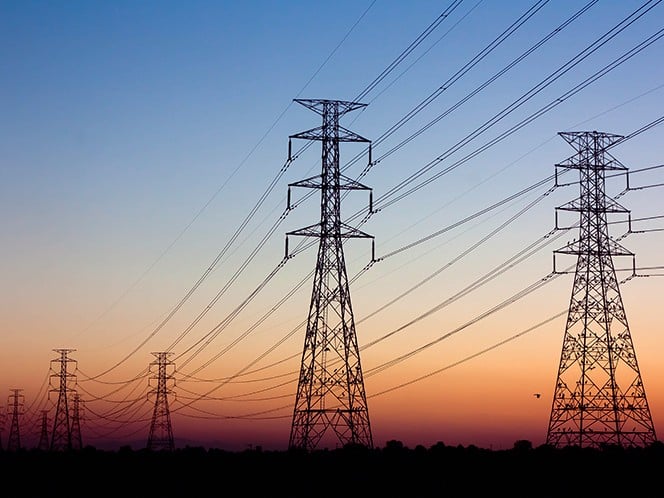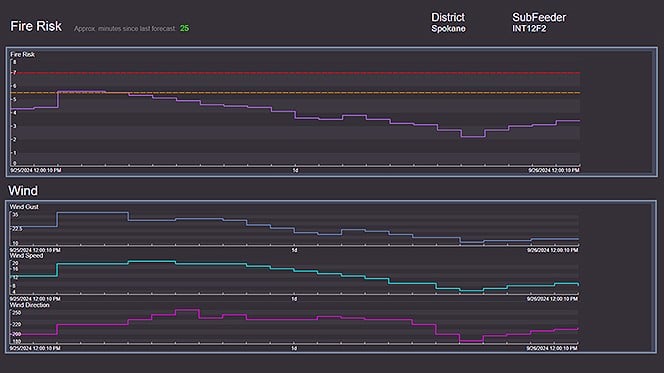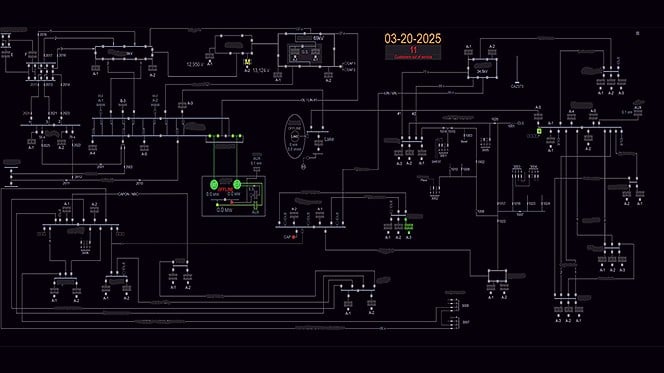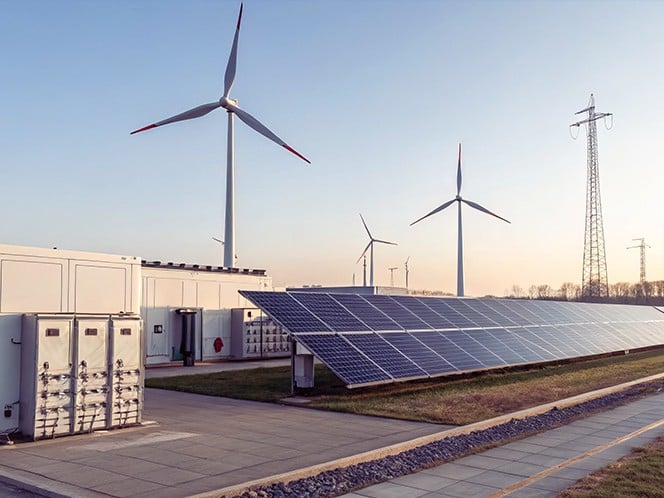Situational awareness for grid resilience
Posted : 29 October 2025
On July 8, 2024, Hurricane Beryl made landfall in Texas, leaving 2.6 million customers without power. More than a week later, hundreds of thousands of those customers were still in the dark. Ice storms, heavy winds, hurricanes, and extreme heatwaves have increasingly strained power systems around the world.[1]
Utilities can no longer afford to treat storms, fires, and climate-driven disruptions as anomalies. They must adopt a holistic view of operations that factors in not just day-to-day grid management but also the ability to predict, prepare for, and rapidly respond to extreme events. What utilities need now is real-time situational awareness—a comprehensive, data-driven understanding of grid status, risks, and operational options at any given moment.
The growing challenges facing modern utilities
Today’s power utilities operate in a far more complex, dynamic environment than their predecessors. Several converging trends are reshaping the grid and making situational awareness more critical than ever:[2]
1. Renewable energy and distributed energy resources (DERs): The rise of rooftop solar, wind farms, and battery storage brings environmental benefits but also adds operational complexity. Power no longer flows in a single direction but in multiple directions, depending on generation and demand.
2. Prosumers: Prosumers, who both produce and consume electricity, are an essential part of the energy transition—new research reveals that half the world’s rooftop solar could meet the entire world’s residential electricity demand.
3. Data overload: Modern utilities deploy thousands of IoT sensors, smart meters, and substation monitors, each producing a flood of real-time data. Yet without integrated systems, this data often sits in silos, limiting its usefulness.
4. Aging infrastructure: Much of the world’s transmission and distribution infrastructure was built decades ago and is now vulnerable to both routine wear and climate extremes.
5. Climate change: Intensifying storms, wildfires, droughts, and heatwaves are already stressing grids beyond original design limits.
6. Rising electricity demand from data centers and electrification: As industries electrify and AI-driven data centers proliferate, demand spikes threaten grid stability if not properly managed.
The takeaway is clear: utilities need a unified, real-time operational picture to anticipate problems before they cascade into outages, equipment failures, or safety risks.

Building situational awareness: Data integration and intelligence
At its core, situational awareness for power utilities means having a continuous, accurate understanding of what is happening across the grid—from the health of individual transformers to the trajectory of incoming storms to real-time supply and demand fluctuations. Achieving this requires integration and management of data from multiple sources, including IOT sensors, smart meters, SCADA systems, and weather forecasts and fire-risk simulations.
A centralized data platform can aggregate, standardize, and deliver this information for real-time visualization, historical analysis, and automated alerts. Modern platforms increasingly layer on AI and machine learning tools to provide predictive analytics, model outage scenarios before they happen, and recommend optimal responses for operators.

Real-world examples: Situational awareness in action
Below are examples of utilities already using advanced situational awareness tools to improve reliability, reduce costs, and respond faster to extreme events.
Asset management and predictive maintenance
- Ontario Power Generation (OPG): Responsible for roughly half of Ontario’s electricity, OPG deployed AVEVA™ PI System™ and AVEVA™ Predictive Analytics across its nuclear and renewable fleet. By building over 1,200 predictive maintenance models, OPG saved $4 million in efficiency gains within 24 months and eliminated 3,000 hours of unnecessary maintenance annually. A single early detection event saved $200,000 (USD) by preventing equipment failure at a nuclear plant.
- Dominion Energy: Using AVEVA PI System’s asset framework, Dominion modeled 28,000 grid elements—substations, transformers, circuits, and more. Within one year, they identified and prevented 42 potential equipment failures, reducing both cost and risk.
- Innergex: This global renewable power producer improved hydroelectric plant visibility through real-time monitoring of turbine efficiency and energy losses. Turbine availability jumped from 93.5% to 99.5%, directly boosting energy output and revenue.
- Portland General Electric (PGE): With more than 30,000 miles of transmission and distribution lines, PGE built a unified operational intelligence platform across wind, thermal, and distribution assets. Results include early detection of underperforming wind turbines, saving 732 MWh/year per turbine and preventing $146,400 in annual revenue losses across just four turbines. Dashboards also allow energy traders comprehensive situational awareness for day-ahead planning and optimized decision-making. As Imad Deeb, Principal Real-Time Trader at PGE, explains:
"[AVEVA] PI System has become an indispensable tool for our market operations. It provides real-time situational awareness of system constraints and flexibilities, enabling us to integrate forecasts, storage optimization, hydro management, and market performance into smarter day-ahead decisions.”
![PGE was able to prevent a potential transformer failure using historical and real-time data]](/en/perspectives/blog/situational-awareness-for-grid-resilience/_jcr_content/root/main_container/main-container/articlepage_containe/column1/responsivegrid/column_control_19910/2colpar1/image/.coreimg.jpeg/1762493370494/w006-blog-asset-management-and-predictive-maintenance-1.jpeg) PGE was able to prevent a potential transformer failure using historical and real-time data]
PGE was able to prevent a potential transformer failure using historical and real-time data]
These examples show how asset health monitoring and predictive analytics prevent failures and optimize generation and trading strategies—key for resilience during volatile weather or demand spikes.
Weather, wildfires, and climate risks
Extreme weather now ranks among the top threats to grid reliability. Wildfires, hurricanes, heatwaves, and ice storms can simultaneously damage infrastructure and destabilize supply-demand balances.[3]
- Avista Utilities:
Serving customers across Washington, Idaho, Oregon, and Montana, Avista faces rising wildfire risks due to hot, dry summers. By combining environmental data, weather forecasts, and feeder performance metrics in AVEVA™ PI Vision™ dashboards, Avista operators can proactively de-energize high-risk lines before fires start—and safely restore power afterward.
 Avista can see in 7-day increments fire risk and wind forecast for crucial locations
Avista can see in 7-day increments fire risk and wind forecast for crucial locations
 Using a grayscale in transmission status dashboards allows operators to immediately see when something is amiss.
Using a grayscale in transmission status dashboards allows operators to immediately see when something is amiss.
- City of Burbank Water and Power:
This small California utility replaced its outdated LED wallboard with comprehensive dashboards integrating grid status with National Weather Service alerts. Now, when wildfire or wind advisories appear, automated email alerts and visual red flags enable rapid, coordinated responses from operations teams.
These initiatives illustrate how real-time situational awareness can transform weather from a reactive crisis into a manageable operational variable.
The role of AI, digital twins, and future innovations
Historically, machine learning has aided utilities in forecasting load, renewable generation, and market prices. But traditional models often struggle with real-time complexity, data integration, and rapidly changing grid conditions.
Emerging technologies offer a path forward:
- Foundation models such as Large Language Models (LLMs) excel at modeling complex temporal and contextual relationships.[4]
- IIoT analytics platforms such as PowerRunner connect everything from smart meters to SCADA systems in real time and make predictions using machine learning models.[3]
- Digital twins—virtual replicas of physical systems—allow operators to simulate “what-if” scenarios before taking real-world actions.
At the National Renewable Energy Laboratory (NREL), researchers are developing eGridGPT, an AI assistant integrating LLMs, digital twins, and AVEVA PI System data. Operators can pose hypothetical scenarios—like the impact of taking a substation offline during a heatwave—and eGridGPT runs simulations, interprets results, and recommends optimal actions.
Such tools promise to make grid management not only smarter but also more autonomous, enabling operators to handle growing complexity with confidence.

Investing in infrastructure for the future
The transition to renewable energy, combined with rising electrification and worsening climate risks, means that utilities must modernize now to remain resilient. Situational awareness—powered by data integration, predictive analytics, AI, and digital twins—offers a way to navigate that uncertainty with clarity and speed.
The utilities leading the way are already proving the value: fewer outages, lower costs, faster responses, and smarter integration of renewable energy. As the energy transition accelerates, utilities that embrace situational awareness today will be the ones best positioned to deliver reliable, sustainable, and secure power in an increasingly volatile world.
1. https://www.iea.org/reports/electricity-2025/reliability
2. https://www.weforum.org/stories/2021/10/solar-panels-half-the-world-roofs-electricity-research/
3. https://www.iea.org/reports/electricity-2025/reliability
4. Gabriel Antonesi, Tudor Ciora, Ionut Anghel, et al. (2025, June 3). Cornell University. From Transformers to Large Language Models: A systematic review of AI applications in the energy sector towards Agentic Digital Twins. https://arxiv.org/abs/2506.06359?
Related blog posts
Stay in the know: Keep up to date on the latest happenings around the industry.